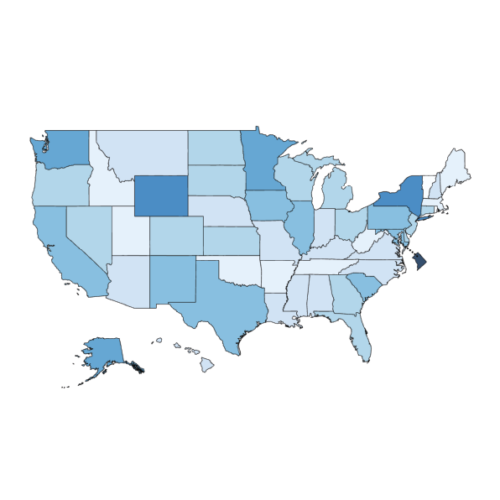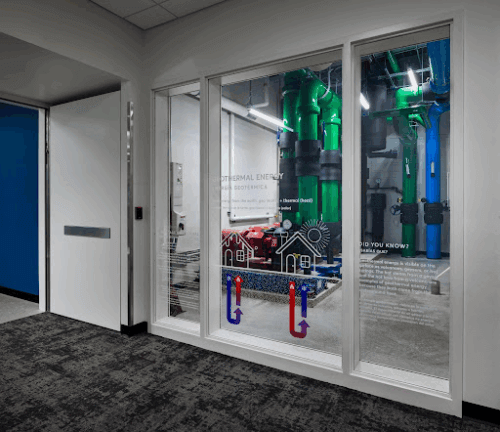- Home
- Blog Posts
- Building the Case for Better Facilities: One Expert’s Perspective from the State...
Building the Case for Better Facilities: One Expert’s Perspective from the State Level
Written by National Center on School Infrastructure (NCSI),
Representing diverse public sector voices from across the country, NCSI’s Advisory Committee members bring a wealth of expertise and experience from the field that has helped shape NCSI’s priorities. Over the course of this year, we are featuring Advisory Committee members speaking about insights gained through their work to drive school infrastructure improvements. Here we interviewed Dean Dykstra, School Construction and Facilities Specialist at the Utah State Board of Education, to hear about his work to foster a strategic long-term educational facility plan in Utah.
In a small office tucked inside Utah’s State Board of Education (USBE), one person is responsible for the long-term health, safety, and construction compliance of over 1,000 public school buildings across 43 school districts and 140 charter schools statewide. Dean Dykstra, Utah’s School Construction and Facilities Specialist, does not have an educational facilities team or budget to address the needs of educational facilities statewide. Instead, he works solo within USBE.
Despite the overwhelming needs across the state, Dykstra is determined not merely to support Utah’s schools with construction compliance but also to create a more strategic long-term educational facility plan for local education agencies (LEAs) and USBE. His approach: elevating awareness, building partnerships, and helping districts and charter schools think strategically about long-term school facility stewardship.
“Educational facilities are second only to transportation in terms of public investment, and approximately 17% of the nation’s population spends every day in school buildings—students, educators, administrators, support staff,” Dean explains. “Educational facilities will always need to be adequately maintained—rebuilt, renovated, rehabilitated, or demolished at the end of their life cycle. So, states need to zoom out to a larger perspective and develop a coherent statewide educational facilities strategy.”
The Challenge: Big Needs, Limited Resources
Utah’s 1,000+ public schools face mounting deferred maintenance of their facilities, much of it in aging Cold War-era buildings. Dykstra estimates that statewide deferred maintenance and capital renewal alone could range from $8 to $10 billion. But funding doesn’t match the scale of the need, and creating a compelling business case for the state legislature—which has promised to curtail funding and lower taxes—is a challenge. “It is difficult to acquire additional educational facility funding within the current legislative mindset of cutting taxes. That does not optimize resources with respect to the current state of need.”
Still, Dykstra recognizes that everyone is “doing the best they can with the resources available to them.” Part of the challenge, Dykstra concedes, is a communications and advocacy gap. “Stakeholders don’t understand the current cost of construction, even though most people have at least some small experience with it. Everyone’s had to put in a new banister or revamp their bathroom. But it’s difficult to absorb the cost increases that began during the pandemic, and to think about the magnitude of those costs on a statewide scale across all of our schools.”
A Tangible, Strategic Mindset
Tackling those challenges requires a collaborative effort by LEAs, states, and national stakeholders. Fortunately, Dykstra brings over two and a half decades of experience in facilities stewardship—including this kind of strategic, multi-jurisdictional thinking—to USBE. Having moved to Utah after a successful twenty-year stint in higher education, he’s now applying his insights to K–12 schools. “When I took this position, it afforded me the opportunity to facilitate changes both within and outside the department, which I am attempting to do.”
Dykstra is working to ensure facilities’ needs will eventually be included in USBE’s strategic plan, alongside key issues such as teaching and learning, and student support. “When I arrived here, the first thing I noticed was that educational facilities were not within the USBE formal strategic plan. Educating up to the USBE Board and state legislature is a heavy lift regarding the state’s educational facility needs.” This internal advocacy is one way Dykstra is changing not just standard practices, but the hearts and minds within USBE and the state legislature.
Data as a Path Forward
Dykstra believes that a statewide commitment to conducting regular facility conditions assessments (FCAs) would lay a foundation for more strategic—and more cost-effective—remediation of facilities issues for all district and charter schools. “To optimize the system, we need to begin conducting FCAs statewide in order to develop our facilities condition index (FCI) for all of Utah’s educational facilities.”
To Dykstra, collecting and maintaining the information that FCAs provide is essential. “If I were defining outcomes, I believe understanding school infrastructure from a facility’s condition assessment, relative to our statewide FCI—that has to be the beginning.” Without that data, it’s nearly impossible to understand the true scale of need, or to prioritize which sites should receive immediate focus. “It will not be simple, easy, or cheap. We need tangible educational facility data so that USBE can educate state legislators and other pertinent stakeholders.”
Trust and Collaboration
As Dykstra sees it, progress will always require cultivating goodwill and breaking down silos between district- and state-level stakeholders. “Projects don’t happen without people,” he says. “We need to have that trust on any construction project—that we’re all going through it, and we’re all going to start it, build it, close it.”
That philosophy guides USBE’s work with LEAs, where trust can sometimes be fragile.“The LEAs and charter schools may be reluctant about the state’s approach, especially with respect to administrative requirements that are legislatively unmandated.” But Dykstra knows that with clear communication about shared goals, he can bridge those divides. For Dykstra, “It is about building those collaborative efforts across all relevant stakeholders.”
Reframing Facilities as a Core Educational Issue
Too often, Dykstra says, facilities are treated as peripheral to the educational mission. Failing to invest in buildings has cascading consequences. “People sometimes don’t consider educational facilities until a facility is beyond its useful lifecycle,” he says.
“I don’t think there’s a magic wand,” Dykstra says. “The educational facilities context is very tangible for me. It is structure, interior finishes, furniture and fixtures, facilities maintenance. It’s steel and glass and drywall.” But Dykstra knows that success requires the intangibles as well: “educational adequacy requirements that respect core programming, buildings that exceed performance needs, and positive and collaborative relationships.” But working to better understand LEAs’ priorities and how to support them in creating truly outstanding learning environments is what keeps Dykstra focused on the long game: aligning policy, practice, and infrastructure to support every school in creating safe, functional, and inspiring places to learn.



